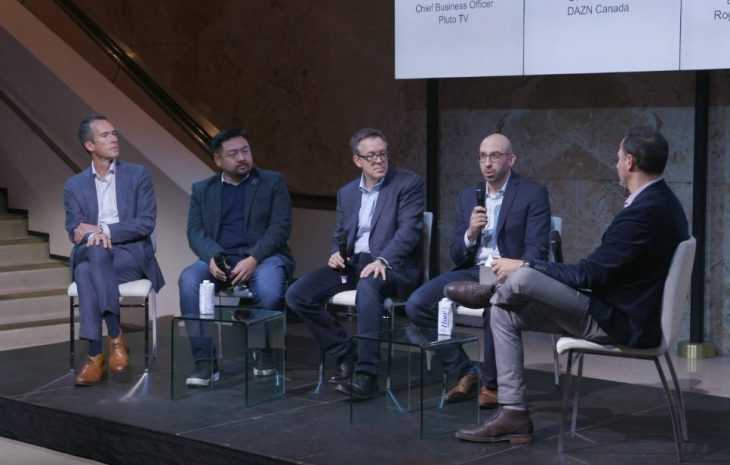
TORONTO – “The notion that there is going to be a static number of (over-the-top) winners and losers, or there’s a shared wallet of three or four or five winners and then a line’s drawn and everyone else loses — I don’t even think that’s close to right,” said Jeff Shultz, SVP of business development at ad-supported OTT service Pluto TV.
He was speaking on a panel Monday afternoon in Toronto at CTAM Canada’s annual Broadcaster Forum (a gathering which now includes a large roster of non-traditional broadcasters).
Shultz said there will be a new dynamic of increased subscriber churn that didn’t exist before now that people have options, and this change will prompt operators to adopt new ways to market and remarket services in order to keep customers interested, and paying. Various offerings—from niche to broad, premium content—will see a percentage of the audience invested.
“The current level of proliferation seen with OTT is not sustainable,” says Bell Media’s VP of OTT strategy and premium VOD distribution Jeff Hersh. “I think a lot more services will come to market and then you’ll start to see consolidation,” while others, like PlayStation Vue, which may have “artificially pulled something together” will continue to drop off. “Great content will always find its way through,” he adds.
Pluto TV, which was acquired by Viacom earlier this year, is a free service offering 200 channels and it mirrors the guide-friendly feel of television, but is not yet fully available in Canada. Still, it serves as a reminder that free TV exists and competitors are ready to pounce into the Canadian market, so operators should be thinking strategically, said Shultz.
Bell’s Crave service has grown in popularity among Canadians, and DAZN, while global, is becoming more of a destination for Canadians to watch sports like pro soccer and NFL football.
Shultz pointed to segmentation as a viable means to producing and sustaining content and profitability. Pluto TV already has a NFL Channel and a MLS channel, too, and according to Shultz, it “will have a channel with every major sports league” with programming seeing an “upward movement within the segmented funnel,” which is happening “with or without all the big guys.”
Norm Lem, DAZN’s SVP of revenue, said he believes the $20/month sports service can “super-serve underserved markets,” and tap content that wouldn’t make it on TSN or Sportsnet, for example (although DAZN outbid Sportsnet and TSN for English Premier League rights this year). DAZN also programs content on Pluto TV’s Fight Channel, which shows a flexibility that traditional TV doesn’t offer.
Price is often what really matters and Hersh says he sees “the consumer asking whether they need to spend money with a TV provider in addition to buying a standalone SVOD or direct to consumer products, or if [they] have to go one way down because (they) just can’t afford to have the TV subscription plus add on X and Y.”
Eric Bruno, Rogers Communications’ SVP of 5G, content and connected homes, emphasized the importance of value, especially when it comes to advertising, citing that they are more tolerable on a free service as opposed to a service “where I’m paying $135 a month,” he says. “It’s about the value proposition of the ad and embracing fragmentation to deliver that value.”
Hersh said some operators decide to go global from the get-go so it can be tricky to compete, which differs “from the perspective held 15 years ago when everything was sold in Canada” and many companies held rights to programming in our market. That said, it is still the case for a lot of popular programming.
Hersh says right now it’s a great time to be a producer of content as there is “a lot of money going to the market” but that “naturally, there is an evolution of all these services figuring themselves out, and (although) there is a lot of new money, no one has stopped doing other things” in order to concentrate on monetization and integration. Making the service really good needs to be the priority.
“I think the advantage from the aggregation standpoint is that if we can make it simple, where you can just pick up your voice remote and say ‘I want to watch the Giants beat the Eagles’, it’s that easy,” adds Bruno, referencing his company’s Ignite TV product which features integrated voice search.
“We’re also constantly managing the lane between what we do on the direct-to-consumer OTT side and the other,” says Hersh. “Every day is a battle on a B2C level and it will continue to be that way until we get it right.”
We’ll have more from the CTAM Canada Broadcaster Forum later in the week.



